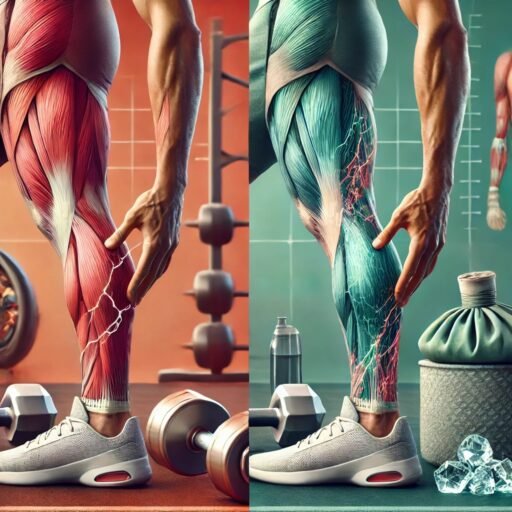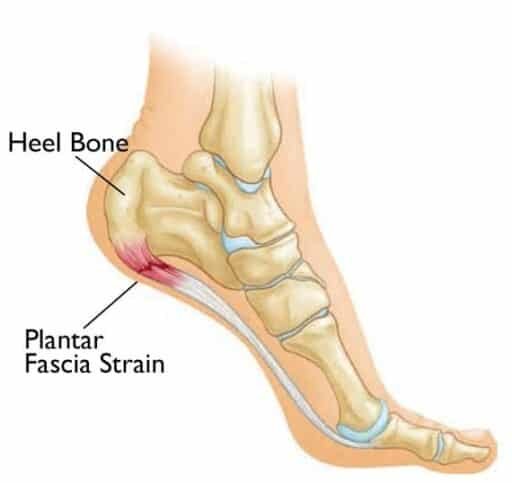
How to Tell the Difference Between a Muscle Cramp and a Muscle Strain: A Guide for My Clients
When you’re pushing your body in a workout, it’s easy to confuse a muscle cramp with a muscle strain. They…
03/10/2024

When you’re pushing your body in a workout, it’s easy to confuse a muscle cramp with a muscle strain. They can both hit you hard, feel uncomfortable, and limit your movement, but the causes and how you handle each one are very different. Understanding the difference is key to managing the situation and speeding up your recovery.
Let’s break it down so you know exactly what you’re dealing with and how to respond the next time your body sends out a warning signal.
What is a Muscle Cramp?
A muscle cramp happens when your muscle suddenly contracts involuntarily and tightens up. You’ve probably experienced this after a long workout or even in the middle of the night. Your calf, hamstring, or foot seizes up, and it feels like your muscle is “locking up.” This is an incredibly common occurrence, especially when you’re dehydrated or running low on key electrolytes like magnesium or potassium.
The pain can be intense and sharp, and during the cramp, it can feel like you’ve lost control of the muscle. When a cramp strikes near a joint—like in your calf near the ankle—it can make the joint feel stiff or locked up. This might make you wonder if you’ve strained the muscle. You’ll feel like the whole area is stuck, and for those few moments, it can feel serious.
But here’s the good news: cramps are usually temporary. Once the muscle relaxes, the pain disappears quickly. You might be left with a little soreness, but there’s no actual damage to the muscle fibers, so you’ll typically bounce back within minutes.
What is a Muscle Strain?
A strain is a completely different story. While a cramp is a temporary spasm, a strain is actual damage to your muscle fibers. This can happen if you overstretch the muscle or lift something too heavy too quickly. Unlike a cramp, where the pain comes and goes, a strain leads to more prolonged pain and often swelling or even bruising.
With a strain, the pain might start suddenly during an exercise or develop gradually afterward. The area around the muscle might feel tender to the touch, and you’ll likely notice pain with any movement that uses the affected muscle. It can feel similar to a cramp in that the muscle is tight, but the key difference is that the pain doesn’t go away as quickly. With a strain, you’re looking at days or even weeks of recovery, depending on the severity.
How to Tell the Difference Between a Cramp and a Strain
Now that we’ve defined the two, let’s focus on how you can tell them apart. If you’re in the middle of a workout and feel a sudden sharp pain, ask yourself these questions:
1. Is the pain constant, or does it subside after a few minutes?
A cramp will release and relax after a short time. If the pain eases and you can move again fairly normally within minutes, it’s most likely a cramp. If the pain sticks around and worsens when you try to move, it could be a strain.
2. Does the muscle feel like it’s locked up or stuck in one position?
Cramps often create that feeling of being “stuck” because the muscle is contracting involuntarily. Once the cramp eases, though, that feeling will go away. With a strain, the muscle might feel tight or weak, but it won’t have that same sudden lock-up feeling.
3. Is there swelling or bruising?
A strain will often result in swelling or bruising, which you won’t get from a cramp. If you notice the area becoming tender to the touch and you start to see discoloration, you’re dealing with a strain.
4. How did it happen?
Strains are more likely to happen when you overexert yourself, lifting something too heavy or making a sudden movement. Cramps, on the other hand, usually result from dehydration, overuse, or a lack of proper electrolytes. Think back to what you were doing before the pain started to help you figure out the likely cause.
Responding to Each Situation
If it’s a cramp, here’s what to do:
– Stretch the affected muscle gently. For example, if your calf cramps up, try stretching your foot by pulling your toes back toward you.
– Hydrate. Cramps are often caused by dehydration, so drink water, and if possible, replenish your electrolytes.
– Massage the muscle or apply a heat pack to help it relax.
– Once the cramp subsides, you can continue with light movement or your workout, but take it easy.
If it’s a strain, stop what you’re doing immediately:
– Use the RICE method: Rest, Ice, Compression, and Elevation. Rest the muscle for a few days, ice it to reduce swelling, and consider using a compression bandage if necessary.
– Avoid stretching or overusing the muscle until it’s healed.
– If the pain persists or is severe, see a professional. You might need further care depending on the extent of the injury.
Both cramps and strains can happen when you’re training hard, but it’s essential to know the difference so you can react appropriately. A cramp is an inconvenience that typically passes quickly, while a strain requires careful attention to avoid further injury.
Remember, listen to your body. If something feels wrong, take the time to figure out whether it’s a cramp or a strain before pushing through the pain. Quick responses can make all the difference in how fast you recover and how effectively you continue working toward your goals.
At Focus Health & Fitness, we’re here to help you move smarter, train harder, and recover better.
Health and happiness,
Ryan Fraser
CrampsVsStrain, FitnessAdvice, FitnessEducation, FitnessTips, FocusHealthAndFitness, HealthyLiving, HolisticHealth, InjuryPrevention, MoveBetter, MuscleHealth, MuscleRecovery, PainManagement, personaltraining, StrengthAndFlexibility, TrainSmart, WorkoutRecovery

Plantar fasciitis is one of the most common foot conditions, causing pain and discomfort along the bottom of the foot,…
22/01/2025